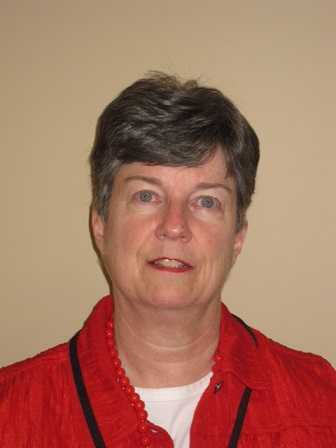Advocates say going online in higher-ed allows for educator collaboration, competitive advantage.
 Until recently, online learning has been viewed as either solely for those interested in adult education or as a branding tactic for innovative institutions.
Until recently, online learning has been viewed as either solely for those interested in adult education or as a branding tactic for innovative institutions.
And though online learning is still one of the most accessible ways of providing quality postsecondary education to those with diverse backgrounds and commitments, the popularity of blended learning models, and recent trends in cross-institutional collaboration, online learning is experiencing rapid implementation in today’s colleges and universities.
Here, eCampus News asked distinguished online learning advocates to give their thoughts on why it’s imperative to take higher education’s perception of online learning from an alternative to a “must.”
[Listed in alphabetical order by last name]
One size doesn’t fit all
 By Thomas Arnett, The Clayton Christensen Institute
By Thomas Arnett, The Clayton Christensen Institute
Students learn differently. They have different interests and they approach new learning experiences with a range of background knowledge, cognitive ability and grit. Yet despite their wonderful individuality, the lecture-based classroom treats students like identical receptacles of information. It’s hard to blame schools and teachers for relying on traditional instructional methods; one-size-fits-all lectures are economically practical for disseminating information to large groups of students. But unfortunately, they fail to ensure that each student masters the content they are taught.
This is where online learning has a powerful role to play. Online learning gives teachers greater ability to personalize their instruction to individual students’ needs. Good online learning is far more than holding classes using teleconference technology or recording lectures and posting them online. Rather, high-quality online learning enables teachers to truly differentiate their instruction and frees them up to provide more individualized support to their students.
For example, the Relay Graduate School of education has leveraged online learning to reimagine traditional approaches to training teachers. Relay provides approximately 40 percent of its instruction through online videos and digital material. With core instruction happening online, face-to-face sessions can then focus more on discussing concepts, practicing teaching skills and providing teachers-in-training with individualized support. Many of Relay’s course assignments also require teachers-in-training to integrate their new skills into real-life K-12 classrooms and then upload videos of their lessons onto Relay’s online learning platform for prompt, detailed feedback.
Relay’s graduate students not only receive the learning benefits of an online approach, they also become better equipped to implement online learning in their own classrooms one day. Thus the great instruction of today prepares the great instructors of tomorrow.
Thomas Arnett is an Education Research Fellow from the Clayton Christensen Institute for Disruptive Innovation. His research focuses on changing roles of teachers in blended learning environments, the evolution of teacher education and professional development, and policies and innovations affecting technology access and infrastructure.
(Next page: Reaching today’s generation; knowing the language)
Because we need to reach today’s generation
 By Jon Bergmann, FlippedClass.com
By Jon Bergmann, FlippedClass.com
When I first started teaching in 1986, the resources I had available to me were limited to: a box provided by the publisher of my textbook, a three-ring binder of curriculum provided by the district, and/or whatever I had in my head. Contrast this with 2015, where teachers not only have publisher materials and their own learning, but also a plethora of online information, simulations, lesson plans, and videos.
Should teachers embrace elements of online teaching into their daily practice or can they afford to teach out of “the box”? In 2014, Project Tomorrow did a survey of over 500,000 parents, students, teachers, and administrators. They included a few questions about how flipped learning, a teaching method which uses teacher-created online videos to maximize face-to-face time, should impact schools. The survey found that:
“School administrators are expecting new teachers to know how to flip their classrooms prior to completing their certification process. Last year, 41 percent of school leaders indicated that pre-service teachers should “know how to set up a flipped learning classroom,” this year that increased to 46 percent.”
This survey shows that there is an expectation that educators be prepared to teach in new and innovative ways – specifically utilizing flipped learning methodology. Teachers must employ instructional techniques which engage students in the process of learning.
We stand at a powerful moment in the world of education, where educators can leverage technology to bring about personalized learning for every student. The ultimate winners in this new era will be the students. Let’s face it: we are teaching the YouTube generation. Online media is out there and it is ubiquitous for our students. The time is now to embrace digital learning as a means to reach today’s generation.
Jon Bergmann is chief learning officer for FlippedClass.com, and was a classroom teacher for 24 years where he pioneered the Flipped Class movement. He is now an author, speaker, and educational thought leader.
Online is today’s language
Today’s students–often referred to as ‘digital natives’–grew up with apps. These are the kids who, when the iPhone first came out eight years ago, were toddlers. In most cases, this generation learned to interface with technology as they learned to speak and comprehend. Today, technology can be considered a first language.
As a result, technology is quickly becoming one of the most commonly used ‘languages’ in today’s classroom. We’re building Versal around the belief that using technology to teach these students is essential for students, teachers, schools and the broader educational experience to thrive in the years ahead.
To use Versal as an example, we offer teachers a canvas for creative educational publishing. At the core are customizable and interactive ‘gadgets’ that empower teachers to create compelling online content and engage these tech-savvy students. As big fans of open ecosystems, we also give those teachers an online platform to publish their work and share it with students in their everyday learning environments (LMSs, Chromebooks, blogs, class websites etc.). Teachers also work together to build curriculum materials and share it among themselves. This sort of creativity and collaboration is key for ed-tech to reach its full potential.
Gregor Freund is the CEO of Versal, an online learning creation platform.
(Next page: Competitive advantage; tomorrow’s teachers)
It’s a format that provides a competitive advantage
 By Robert Monroe, Carnegie Mellon University
By Robert Monroe, Carnegie Mellon University
Over the past three years, we have undertaken an ambitious project to offer our flagship MBA program in an online-hybrid format. One of the key motivations for offering the same MBA we offer onsite in an online format is to provide an academic experience that mimics a global, professional experience.
We believe that MBA students who participate in online formats will likely have a substantial competitive advantage in the global workforce due to the exposure and practice working with and through online technologies. What students learn one day can immediately be applied to their professional career the following day. This real-time application is facilitated by the technology.
Given the amount of collaboration and group work required in online formats across different time zones, students adept with these tools will have a competitive edge in multi-national companies where video conferencing is used daily to connect global teams. Students must familiarize themselves with the blend of technology tools, applications and solutions that are used throughout global business practices.
Our responsibility as academics is to provide students with the skillset and tools they need to lead successful and long-lasting careers. Recognizing the evolution of technologies incorporated into today’s business practices, we must model our curriculum and programs in such a way that reflect what is happening in the workplace. There has been a natural evolution in education technologies–chalkboard, white board, PowerPoint and now online formats–that must advance to meet the needs of the current student and future workforce.
Robert Monroe is the director of the Online Hybrid MBA at Carnegie Mellon University’s Tepper School of Business, which has delivered online education to students for the last few decades.
It’s great for preparing tomorrow’s teachers
 By Candis Harrington Shupe, Western Governors University
By Candis Harrington Shupe, Western Governors University
Online learning allows us to serve a diverse and nontraditional undergraduate and graduate student body—including adult learners with families and full-time jobs, members of the military stationed overseas, students coming back to college to finish their degree, and students located all across the country.
In our Teachers College specifically, it allows us to provide a robust program ensuring our teacher candidates receive similar experiences as their counterparts attending a brick-and-mortar university. WGU uses video of actual classroom instruction and research-based content, provided by Teachscape, to help reinforce the principles being taught and show the students pin-pointed, pedagogically-sound teaching examples of how those principles can be applied during classroom instruction.
The videos provide an effective alternative for students to complete their required observational hours prior to starting their in-person student teaching. Oftentimes our students’ personal schedules or the policies and accommodations of schools where they can do observations make it difficult for them to schedule and complete the in-classroom observational hours needed. By accessing the robust library offered, students can complete those observations anytime, anywhere.
Course mentors can send specific assignments to the teacher candidates in order to assess different competencies to ensure they are prepared to enter the classroom. This allows our students to focus their time more effectively and efficiently.
As a result of using these online resources as a part of our online program, we’ve found our teacher candidates are extremely engaged in their teacher preparation courses, which has resulted in higher pass and completion rates. Last year, 100 percent of our graduates of teacher licensure programs who took their certification exams passed and were granted licensure. In addition, according to a recent report by Edventures, WGU was the top overall producer of STEM teacher graduates, so we know online teaching and learning not only works, it works extremely well. And experts agree: the National Council on Teacher Quality named our secondary math education program number one in the nation.
Candis Harrington Shupe, M.Ed. is a Learning Resource Manager at Western Governors University, an accredited online university based in Salt Lake City.
(Next page: Content mastery; educator collaboration)
It’s a content mastery blessing
 By Kathy Spradlin, Liberty University
By Kathy Spradlin, Liberty University
Our Math Department decided to redesign our developmental math sequence from traditional, face-to-face courses to an emporium model, supported by online mastery-based learning technology and assessment, and scheduled lab hours. After the initial implementation, our faculty made adjustments to the program to improve course outcomes. We hypothesized that allowing late work to be turned in, with a penalty, and requiring lab hours would improve student performance.
Through the use of Pearson’s MyMathLab and MyLabsPlus technology, our fall 2012 ABC rates rose by 22 percent in Fundamentals of Math and 14.7 percent in Intermediate Algebra, compared with average ABC rates prior to implementation of the emporium model. In addition, pass rates based on the number of our students completing the course rose 13.3 percent in Fundamentals of Math and 15.7 percent in Intermediate Algebra, compared to pass rates in the 12 prior semesters.
Overall, through the use of online learning technology, my students are spending more time doing math and less time watching someone else do math. Because mastery is required, they are getting a solid foundation in all concepts; whereas, in traditional courses, a student could pass with high grades on a few chapters and failing grades on others.
Students like the immediate feedback and opportunity for additional practice the online learning system offers. Unit pretests have been added to help students who know the material move ahead more quickly. Post-quiz reviews and post-test reviews are required of students who need remediation. Tutoring sessions and instructor conferences are scheduled for those students who need more personal instruction and assistance. I would suggest use of mastery-based learning technology and assessment to a colleague with the warning that merely adding computer homework onto traditional instruction is not the best use of an online learning system. The course should be redesigned with a balance of online learning and human interaction.
Kathy Spradlin is coordinator of Math Emporium and Developmental Math at Liberty University. Liberty offers than 200 programs online.
It allows educators to create and collaborate
 By Nancy Zingrone, Northcentral University
By Nancy Zingrone, Northcentral University
I think online education of some sort is an absolute must for the future of education. I still take online education courses on WiziQ, have sampled courses from the MOOC provider Coursera on social psychology, behavioral economics, and the history of computing, and never miss an episode of CrashCourse history or psychology on YouTube. A gifted teacher from Mexico taught Spanish to me and a group of students from both hemispheres. The International Society for Technology in Education (ISTE) and the Virginia Society for Technology in Education have provided activities on teaching with technology in Second Life. Then there are the webinars from the TLT Group and the Center For Faculty Excellence at Northcentral University.
It is impossible to list all the online experiences that have enriched my own education. Learning online is not only effective and convenient, it inspires you to create and collaborate. I have been inspired to work in online education, to create blogs, online courses, YouTube tutorials and three channels, not to mention a library and learning center in Second Life. For the second year, I’m co-facilitating a free, three-platform course on virtual world education that takes place on WizIQ, Integrating-Technology.org, Moodle, and Second Life. We three co-facilitators not only live in different countries but in different time zones. The presenters and learners who have participated in our course are also from all over the world. We couldn’t duplicate face-to-face the experiences we have all shared so far without a huge budget for travel, books and materials. But through online technology, the global has become local for us, the local global, and the conceptual concrete. What could be better?
Dr. Nancy L. Zingrone, adjunct faculty at the School of Psychology, Northcentral University, teaches psychology to undergrads and masters students online for the University, as well as adult education at her own consulting firm and with online teaching colleagues on Moodle, WizIQ and in Second Life.
- 25 education trends for 2018 - January 1, 2018
- IT #1: 6 essential technologies on the higher ed horizon - December 27, 2017
- #3: 3 big ways today’s college students are different from just a decade ago - December 27, 2017


